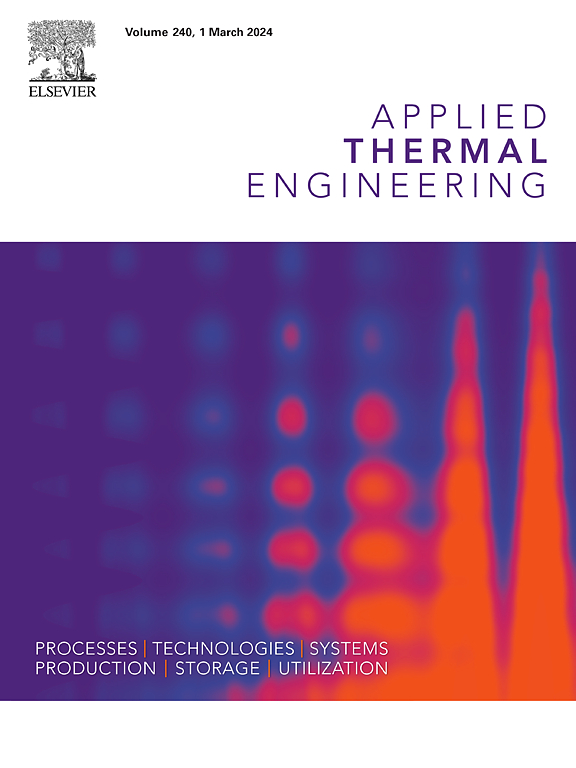Research on jet ignition phases and control parameters in an active pre-chamber optical engine under ultra-lean combustion conditions
IF 6.1
2区 工程技术
Q2 ENERGY & FUELS
引用次数: 0
Abstract
The active pre-chamber (APC) jet ignition system is one of the primary technologies for achieving ultra-lean combustion and high thermal efficiency in engines. The impact of the jet process within the engine, as well as its control parameters, on emission pollutants (particularly soot particles) remains unclear. This study focuses on examining the effects of various low-flow injection control strategies on engine combustion and emissions by using optical experiments and numerical simulations. It also explores the impact of different ignition advance angles (ignition timings) based on a short pre-chamber mixing interval to observe ignition combustion, flame propagation, and emission characteristics under ultra-lean conditions (λ = 2.0). The main conclusions are as follows. Appropriately increasing the injection mass can enhance engine load. However, further increases in injection mass significantly raise particulate emissions, resulting in an increase in particle number by up to more than 37-fold, especially for small particles in the 5–––10 nm size range. The chemical reaction between the luminous jet flame and the bright incandescent wake jet flame, as captured by high-speed photography, effectively characterizes the various stages of jet ignition. To reduce particulate matter emissions, it is crucial to avoid the foreseeable wake jet flame caused by the enrichment of the jet mixture in the pre-chamber. The low-flow injection timing should neither be too early nor close to the ignition spark timing. The early injection causes fuel to accumulate at the top of the pre-chamber, hindering the jet flame’s propagation into the main combustion chamber. Late low-flow injection leads to fuel enrichment, resulting in uneven mixing and poor atomization and diffusion due to short mixing times. Ignition after a short mixing time interval tends to increase knocking, resulting in intense combustion and an advanced phase, which slightly reduces load and combustion stability. Regarding the heat release ratio, the total heat release from the two combustion stages in the pre-chamber should ideally account for about 5–6 % of the heat release in the main chamber.
超低燃烧条件下主动式前室光学发动机的喷气点火阶段和控制参数研究
主动预室(APC)喷射点火系统是发动机实现超稀薄燃烧和高热效率的主要技术之一。发动机内的喷射过程及其控制参数对排放污染物(尤其是烟尘颗粒)的影响仍不清楚。本研究通过光学实验和数值模拟,重点考察了各种低流量喷射控制策略对发动机燃烧和排放的影响。它还基于较短的前腔混合间隔探索了不同点火提前角(点火时间)的影响,以观察超低排放条件(λ = 2.0)下的点火燃烧、火焰传播和排放特性。主要结论如下。适当增加喷油量可提高发动机负荷。但是,进一步增加喷射质量会显著增加微粒排放量,导致微粒数量增加多达 37 倍以上,尤其是 5-10 nm 尺寸范围内的小微粒。高速摄影捕捉到的发光喷射火焰和明亮的炽热尾焰之间的化学反应,有效地描述了喷射点火的各个阶段。为了减少颗粒物的排放,关键是要避免因预室中喷射混合气的富集而产生可预见的唤醒喷射火焰。低流量喷射时机既不能过早,也不能与点火火花时机接近。过早喷射会导致燃料在前腔顶部积聚,阻碍喷射火焰进入主燃烧室。过晚的低流量喷射会导致燃油富集,造成混合不均匀,并且由于混合时间短,雾化和扩散效果不佳。混合时间间隔较短后点火往往会增加爆震,导致燃烧剧烈和阶段提前,从而略微降低负荷和燃烧稳定性。关于放热比,预燃室两个燃烧阶段的总放热最好占主燃室放热的 5-6%。
本文章由计算机程序翻译,如有差异,请以英文原文为准。
求助全文
约1分钟内获得全文
求助全文
来源期刊

Applied Thermal Engineering
工程技术-工程:机械
CiteScore
11.30
自引率
15.60%
发文量
1474
审稿时长
57 days
期刊介绍:
Applied Thermal Engineering disseminates novel research related to the design, development and demonstration of components, devices, equipment, technologies and systems involving thermal processes for the production, storage, utilization and conservation of energy, with a focus on engineering application.
The journal publishes high-quality and high-impact Original Research Articles, Review Articles, Short Communications and Letters to the Editor on cutting-edge innovations in research, and recent advances or issues of interest to the thermal engineering community.
 求助内容:
求助内容: 应助结果提醒方式:
应助结果提醒方式:


